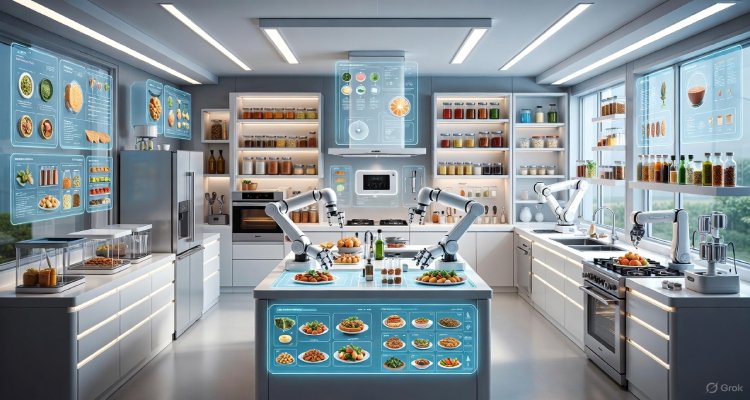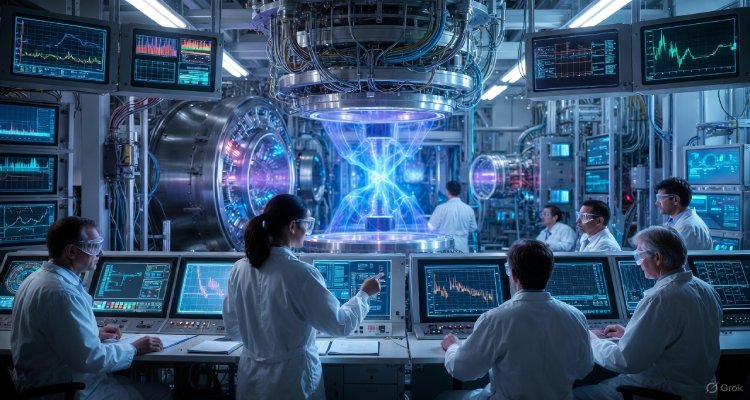The Update: AI, Apps, and All Things Innovation
Explore how artificial intelligence and app innovation are reshaping industries, redefining user experiences, and fueling the next tech revolution.
The Update: AI, Apps, and All Things Innovation
In an era where change is the only constant, the intersection of artificial intelligence and mobile technology has emerged as the epicenter of global innovation. From personalized health tools to creative AI co-pilots and hyper-automated work apps, the digital landscape is evolving faster than ever—blurring the lines between what’s real, what’s possible, and what’s next.
The Digital Evolution: A Quick Backstory
Just a decade ago, mobile apps were largely functional—maps, texts, calendars, games. Artificial intelligence, meanwhile, remained mostly confined to academic circles or enterprise-level projects. But the release of transformative technologies like OpenAI’s GPT models, Apple’s Neural Engine, and Google’s Tensor Processing Units (TPUs) cracked open the door to a future where AI doesn’t just support our lives—it anticipates them.
Today, we carry in our pockets what once required server rooms and research teams. From ChatGPT to AI-powered design apps like Canva’s Magic Studio, innovation is no longer an enterprise luxury—it’s a personal asset.
What’s New: The AI-First App Era
The year 2025 has brought a tidal wave of AI-enhanced applications across nearly every category:
1. Productivity Reimagined
Tools like Notion, Grammarly, and Microsoft 365 Copilot are now powered by generative AI that summarizes, drafts, and even ideates. Users no longer write alone or work manually—AI serves as a silent partner, trimming hours off tasks.
2. Creative Apps Turn Users into Designers
Canva, Adobe Firefly, and Runway ML are enabling users to generate professional-grade visuals with just a prompt. No formal training, no steep learning curve—just imagination, turned into reality via algorithms.
3. AI in Wellness and Health
Apps like Replika and Woebot provide mental health support, while fitness apps use machine learning to customize routines in real time. AI is also entering diagnostics, with apps like SkinVision helping identify skin conditions using image recognition.
4. Voice, Vision, and Virtuality
Snapchat’s AI chatbot, TikTok’s generative video filters, and BeReal’s integration of real-time emotion recognition illustrate a shift toward context-aware content. Even dating apps are getting smarter—Hinge now uses AI to recommend not just matches, but icebreakers.
Expert Takes: “We’re Entering the AI-Native Generation”
“Today’s apps aren’t just AI-enabled—they’re AI-native,” says Dr. Leena Rao, a Stanford tech futurist. “This means AI isn’t an add-on; it’s the core. It’s embedded in design, user intent, and decision logic.”
Developers echo this sentiment. “The real innovation isn’t in replacing people—it’s in amplifying them,” says Arun Patel, lead engineer at a California-based startup building voice-controlled workplace tools. “Apps today learn faster than people can explain their needs.”
Meanwhile, public reception is a mix of wonder and worry. While Gen Z and Millennials are enthusiastic early adopters, concerns about data privacy, job displacement, and AI hallucinations linger.
The Ripple Effect: Who’s Affected and What’s Next?
The integration of AI into everyday applications is rewriting economic equations:
- Small businesses can now automate customer service, design marketing materials, and even develop websites with little to no technical background.
- Students and teachers are using tools like ChatGPT and Perplexity to transform research and curriculum design.
- Developers are shifting from writing code to training and prompting models—redefining what it means to “build” an app.
- Enterprises are accelerating digital transformation while navigating ethical landmines.
And yet, for all its marvels, the road ahead remains uncertain. Regulation, digital literacy, and algorithmic transparency will define whether innovation serves humanity—or simply commercial interest.
The Takeaway: Innovation Is Getting Personal
What began as a tech arms race among global giants is now unfolding in living rooms, classrooms, and creator studios. The barrier to entry is vanishing, empowering more people to innovate, express, and build with tools once reserved for Silicon Valley.
As we brace for the next wave—AI agents, quantum-enhanced apps, and emotionally intelligent interfaces—the only guarantee is that disruption is the new default. In the update-driven world of apps and AI, staying current isn’t just about downloading the latest version—it’s about rethinking what’s possible.
Disclaimer : This article is for informational purposes only and does not constitute professional advice. AI applications should be used responsibly, with attention to privacy and security.











